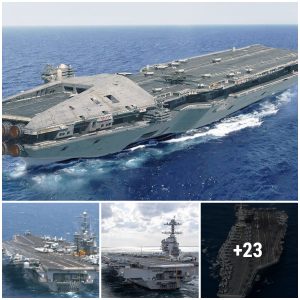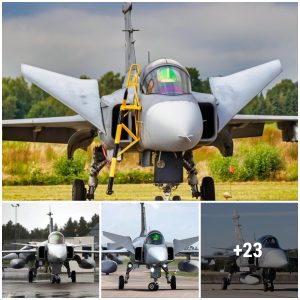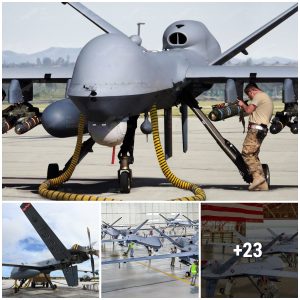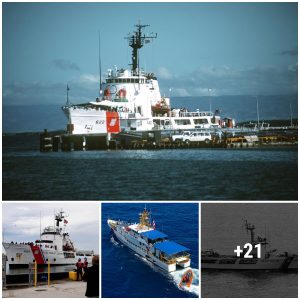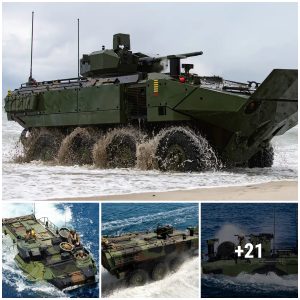After France’s military, no European power has received as much mockery as Italy’s – due largely to the number of defeats it suffered during the early stages of the Second World War. Currently, the Italian Armed Forces have some 340,000 personnel in its ranks, down from nearly 357,000 just seven years ago. Yet, Italy is still ranked 11th out of 142 countries in the annual Global Firepower review, and more importantly, it continues to play a key role in NATO’s defense posture.

Italy: A Military Powerhouse?
In addition, Italy’s military is considered vital in protecting NATO’s southern flank in the greater Mediterranean region, which is considered to stretch from the Persian Gulf in the east to the Gulf of Guinea on the coast of West Africa. Roughly 30 percent of global maritime trade currently transits the Mediterranean, while dozens of undersea cables vital to the flow of information and communications now crisscross the waters.
The significance of the region will only likely increase as Europe tries to end its dependency on Russian energy, as the Mediterranean is at a crossroads for petroleum and gas exploitation on both land and sea.
For those reasons, Italy’s military is now focused on increasing its expeditionary capabilities amid rising tensions in the Mediterranean, and it has sought to institute a force that can be quickly deployed, operate across multiple domains, and most importantly interoperate with its NATO allies. As part of the ongoing effort, Rome has been seeking to adopt the latest military hardware, which has included the Lockheed Martin F-35 for both its Air Force and Navy.

Part of the NATO Military Industrial Base
In the consumer world, Italy is known for its luxury goods – from automotive maker Ferrari to clothing maker Gucci – but the Southern European nation is also home to some of the world’s largest defense contractors, including Beretta, Fincantieri, and Leonardo. Those companies produce everything from small arms to ships and aircraft, and other crucial components used in military hardware.
Italy has been one of the nations the U.S. military depends on for both defense relations and military supplies and equipment – and the country has been a critical supplier of parts for and is involved in the development of both the F-35 Joint Strike Fighter and the U.S. Air Force’s MH-139A Grey Wolf helicopter. An Italian defense contractor was also chosen to build a key new weapons system for the U.S. Navy — the Constellation-class frigate.
Italy is currently one of nine nations — along with Australia, Canada, Finland, Norway, Netherlands, Spain, Sweden, and the United Kingdom — to maintain the security of supply arrangements (SOSAs) with the United States. Rome remains a critical part of NATO’s Military Industrial Base.

Roman Resurgence
Russia’s unprovoked invasion of Ukraine had spurred many NATO members, including Italy, to increase their respective defense budgets. Even as eyes are on Eastern Europe, and specifically Ukraine, Rome has been quick to address the significance of the Mediterranean.

“The marked increase in unfriendly naval activity in the Mediterranean indicates that we should not lose sight of this geopolitical area,” Adm. Giuseppe Cavo Dragone, Italy’s chief of defense, said at an event hosted by the Center for Strategic and International Studies in May.
Italy is now on track to meet NATO’s goal of spending 2 percent of its GDP on defense by 2028, and while spending on the Italian Army will be a priority, the Italian Navy (Marina Militare) will acquire at least seven Thaon di Revel-class offshore patrol vessels. In addition, Rome has started production on its second Vulcano-class logistic support ship, the first of which was commissioned last year. It also has plans for new destroyers and a replacement for its three San Giorgio-class amphibious transport dock.

Rome is also building ITS Trieste, the largest Italian warship built since the Second World War. While designed as an amphibious assault ship, the 803-foot long warship, which displaces 30,000 tones, will be able to carry at least a dozen F-35Bs. If necessary, it essentially could operate as Italy’s third aircraft carrier – allowing its navy to be at the center of a force that can protect the crowded Mediterranean and beyond.
Simply put, Italy is back.
